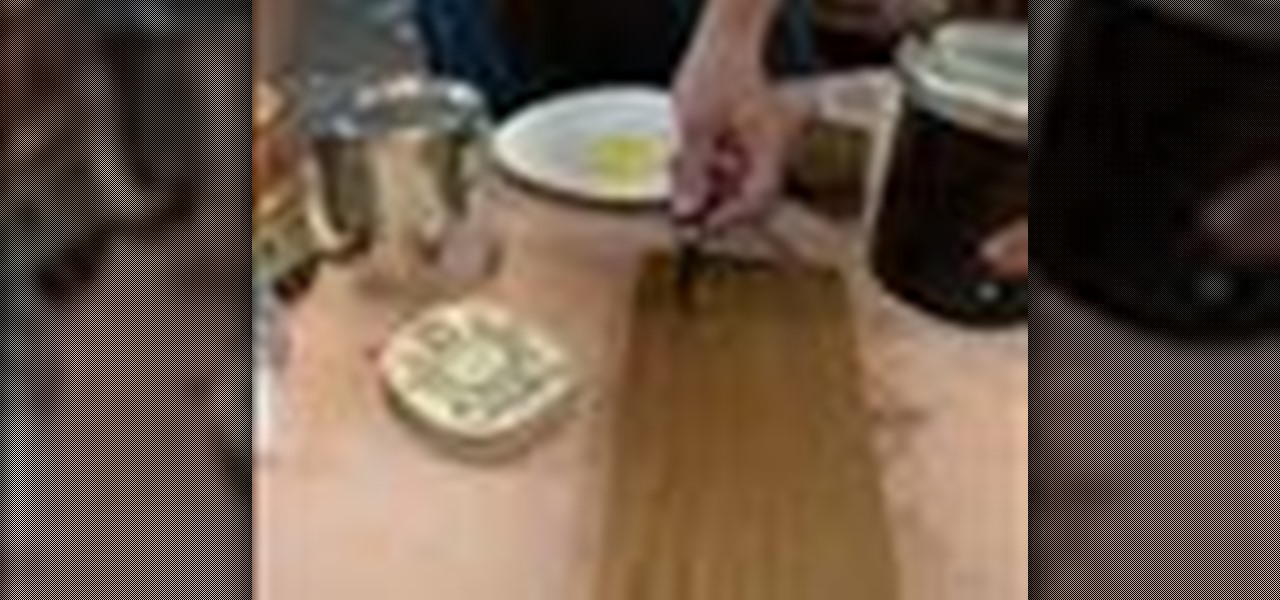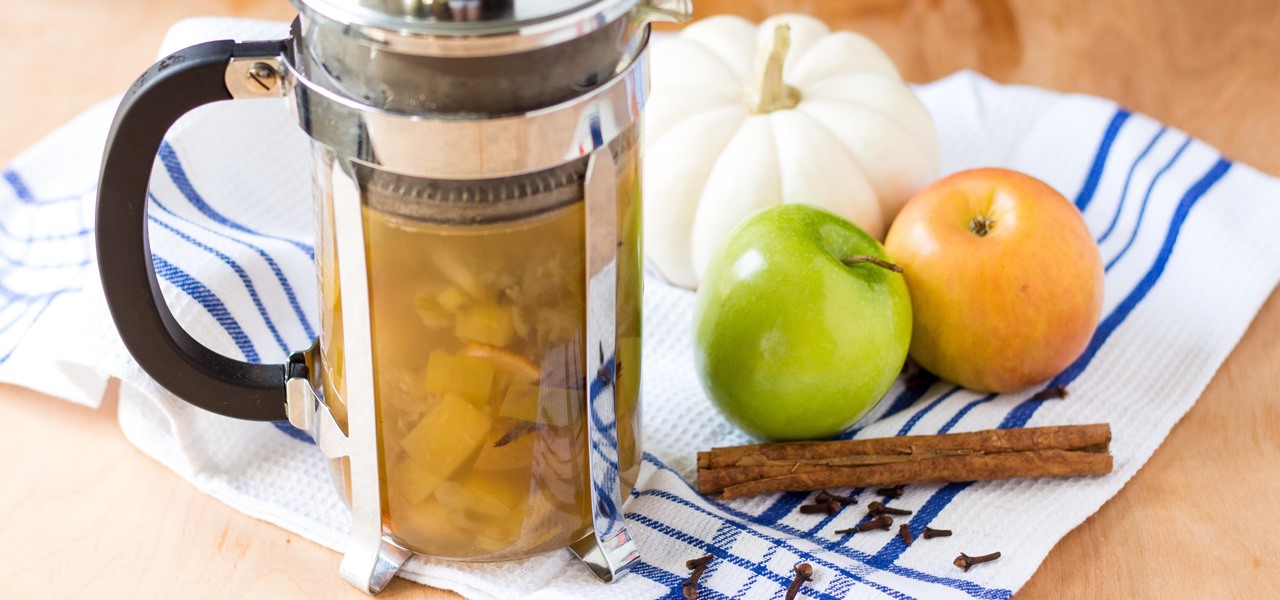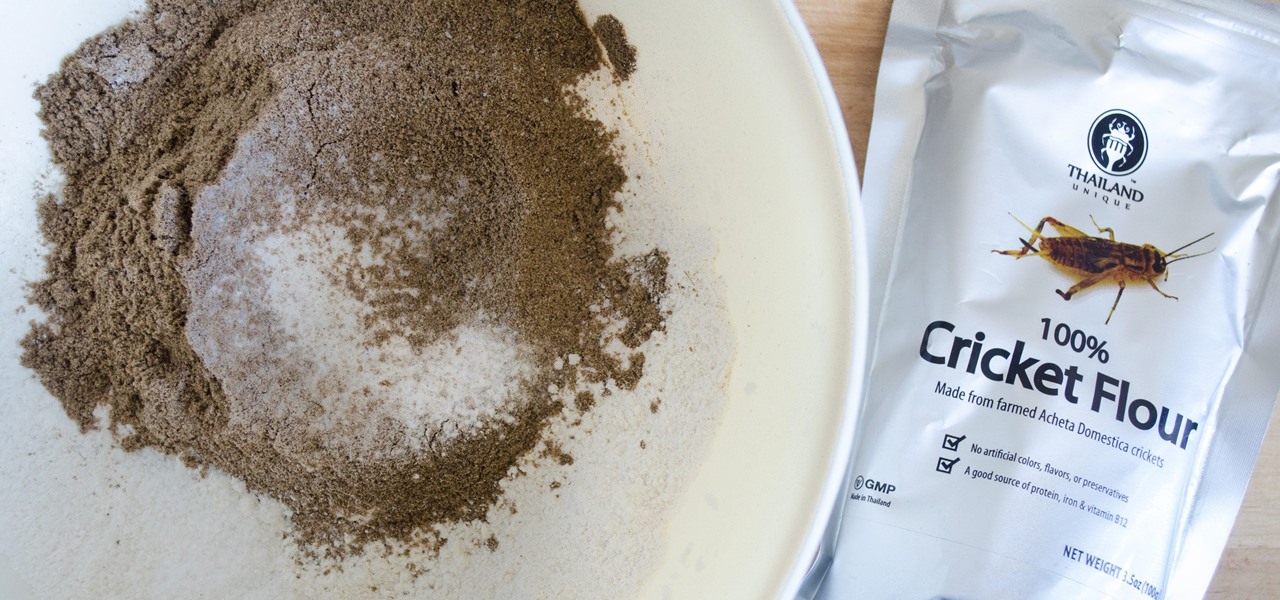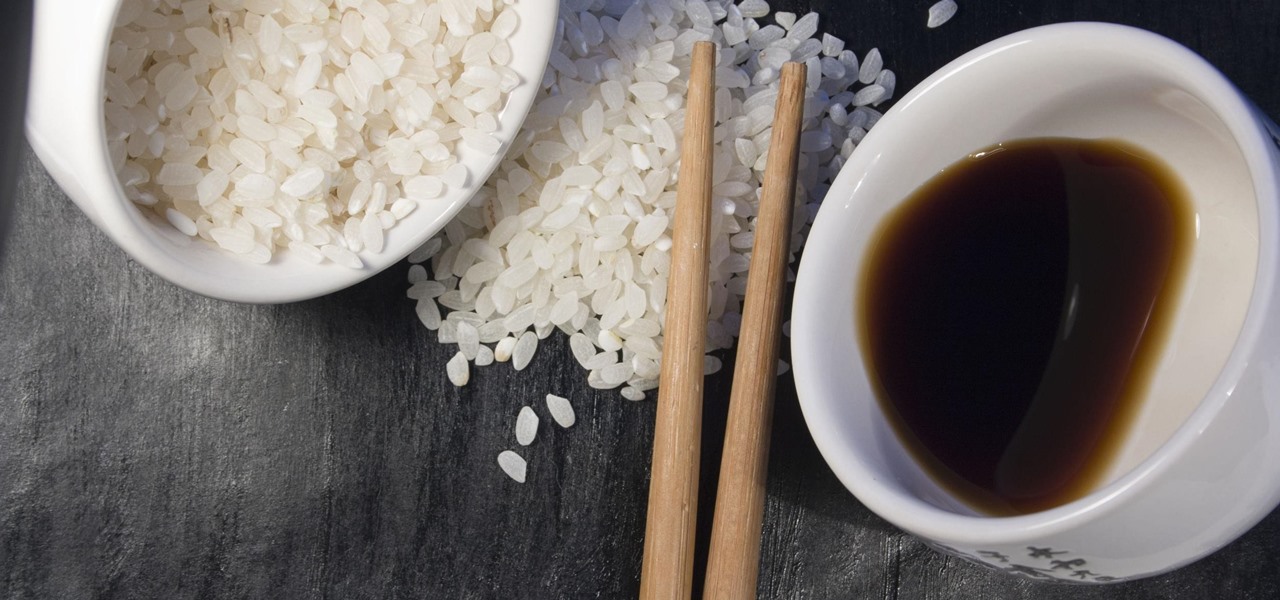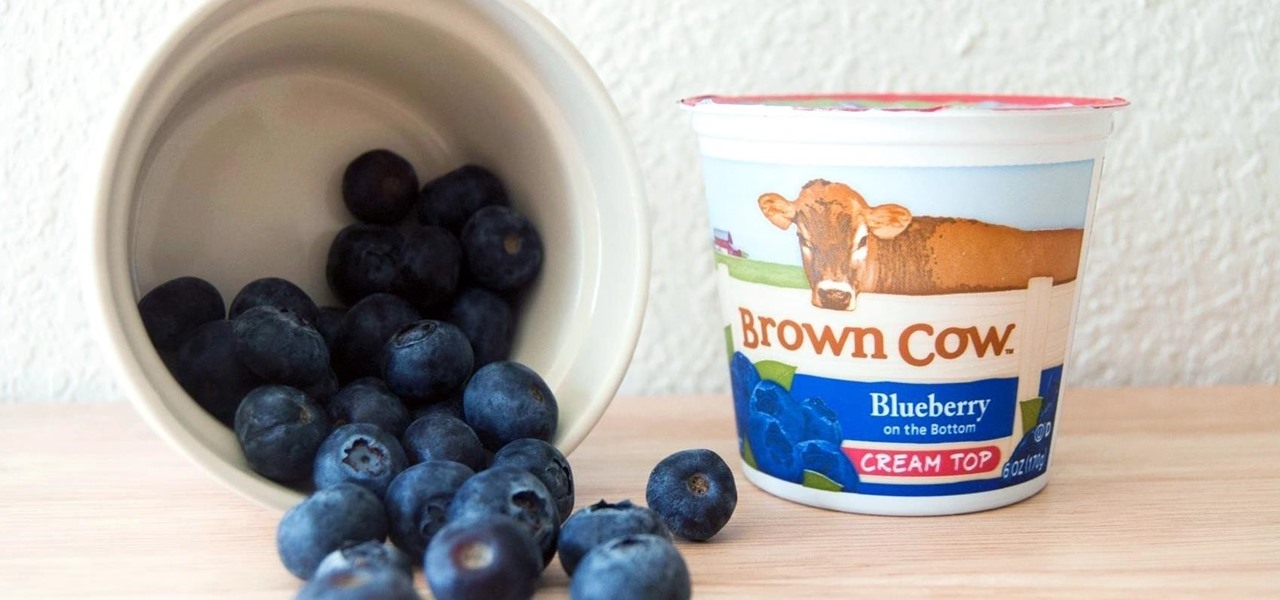
White butter sauce, or beurre blanc, is a most decadent, creamy concoction that makes almost any type of fish taste like heaven on your tongue. The particular white butter sauce featured in this video is made with white wine for a very rich flavor.
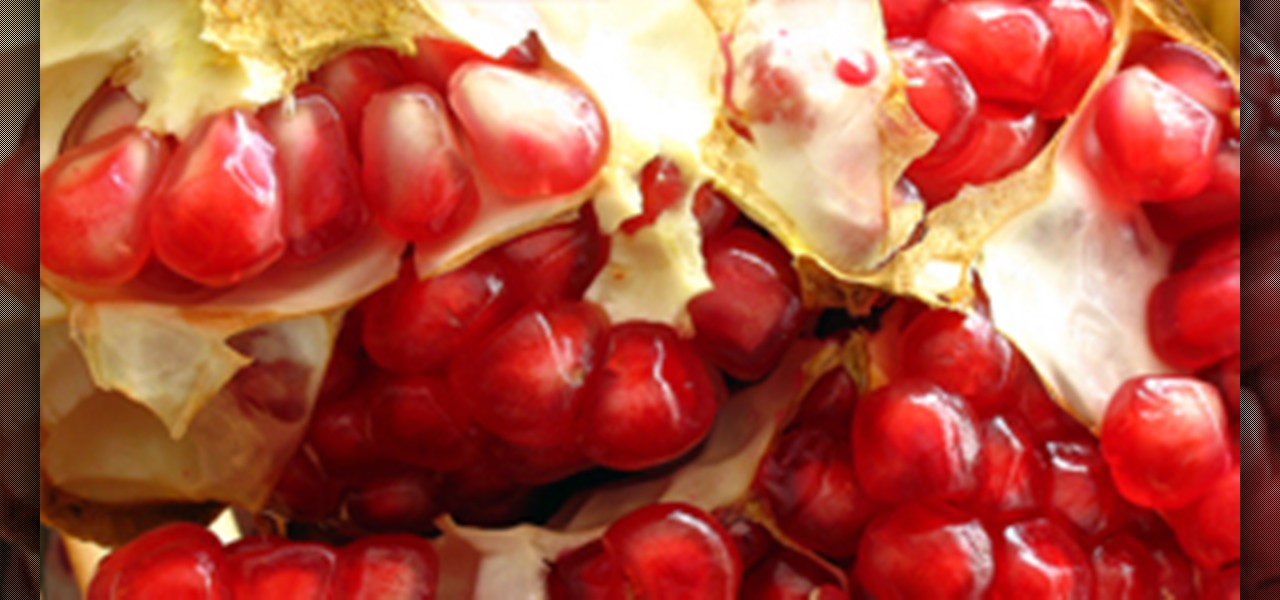
Pomegranates are high in antioxidants and pack a strong, tangy flavor, but how in the world do you open them without making a mess? Learn how to open pomegranates, and also how to make juice from the ruby-red seeds inside. You can eat the seeds just as they are. If you want to make pomegranate juice, you can throw the seeds in a blender. Or for a quick and fun way, you can also place them into a plastic freezer bag. Remove most of the air, seal the zipper, and use a rolling pin to break the s...

Homemade baby food provides your little one with a natural, nutritious meal. Learn what fruits are right for your child and how to prepare, cook, and store baby food. Babies between 4 and 6 months old are ready to start integrating solid food into their diet. Remember to check in with your pediatrician before making any changes to your baby's diet. When making baby food, be sure to wash your hands and use clean equipment and tools. You can also freeze it in an ice cube tray, and once frozen, ...

Goat milk is a popular additive to soap due to its beneficial effect on skin. This video shows you three ways to incorporate goat's milk into your home made soap making project, using fresh goat's milk and the cold press method. Goat Milk Soap - How to Make Soap Using Goat Milk Video.

These boxes are great for small gifts, and you can make them at home. You will need a craft knife, a square ruler, a cutting mat, heavy paper (approximately 6 inche by six inches) and Dura-Lar paper or sheets of clear acetate. Make a home made gift box for Christmas or holiday presents.

Are you really into making your own greeting cards? Then you should definitely introduce quilling into your craft oeuvre. Quilling creates a rococo 3D effect that makes every design you adhere to a card more interesting.

If you're a regular of WonderHowTo, you certainly have a stockpile of custom-made jewelery by now. Why keep it on a drab, prefab and impersonal store-bought rack when you can make your own? For complete instructions on making you own custom earring rack, watch this free video guide. Make your own DIY earring holder.

What makes a triathlon bike a triathlon bike? Check out this instructional cycling video that teaches you about angles, seating, position, aerobars, and the importance of a proper bike fit. In summary from the video, a triathlon bike has a steeper angle for the seat-tube which makes it more vertical thus allowing to get your hips and body more forward in the aero-position compared to road bikes. Triathlon bikes are made for 'aerobars' instead of the curved bars that one sees on road bikes. Wa...

This video will show you how to enable text copying in a flash website. By allowing text copying you are making your site more user friendly, but also making in more vulnerable to plagiarizers. Enable text copying in a flash website.

Watch as Gordon Ramsay comes into your kitchen to show you how to cook like pro. Tonight he makes a delicious fish pie with salmon and fresh prawns. It makes a hearty meal for all the athletes in your house. Make fish pie with Hell's Kitchen Gordon Ramsay.

Professional finisher Peter Gedrys details how to mix clear furniture wax with dry pigments and artist's oil colors to create decorative finishes, man-made patinas, and color-matched protective finishes for furniture. Gedrys provides three recipes for making colored wax and shows off various mixing techniques. Mix and apply wax when finishing furniture.

Have you ever wanted to make your own carbonated beverages such as soda and carbonated water?t costs very little and can be made with stuff found around the house. It's great for making homemade sodas, seltzer water, and even re-carbonating flat beverages. Carbonate water aesily and for little money.

Sarah Carey of Everyday Food shares the three steps to making a tasty Mexican-Style Lasagna.Prepare filling made right in the processor, for step one.Layer the tortillas and then the filling is put in just like a regular lasagna.The last layer will be the cheese. Make Mexican style lasagna.

Julia Child demonstrates how to make warm peach tarts - seasoned peaches, baked along with a flaky pie crust. Chef Gordon makes individual tarlettes starting with the filling made from fresh ripe peaches. Keep the skins on to preserve flavor. Make warm peach tarts.

Have you ever taken a photo to share with a friend, only to realize it was actually a Live Photo? Maybe you said something embarrassing in the background, or perhaps you moved the camera out of frame onto a subject you don't want your friend to see. Luckily, making a Live Photo a regular still photo is a breeze.

There are times when leadership is tested. This is one of those times. As government and business leaders around the world are grappling with the unfolding coronavirus pandemic, the real-time responses to the crisis from many leaders have been great and, at times, less-than-optimal.

Black Friday is upon us. Whether you prefer to duke it out in stores or calmly shop online, there's no doubt you'll find great deals on the items you're looking for this holiday season. It's the perfect time of year to buy something expensive, like a good pair of AirPods, Beats, or Bose, at a much more opportune price.

Indian startup Dimension NXG is launching augmented reality headsets into India's consumer market with a bold idea: focusing on immersive computing in education on the high-end. The plan is to give a new kind of AR headset to schoolchildren in remote Indian villages, starting from class 5 (age 10) until graduation.

Increasingly, cutting-edge platforms like blockchain technology and augmented reality are overlapping, forging new digital frontiers that promise to change the way we interact with the virtual and the real world.

When it comes to the business of augmented reality, companies that aren't already introducing new products or apps are focused on producing the AR technology of the future. But in the realm of real products and apps, Magic Leap continues to show off what its headset can do, this time via a new app that transports users to the ocean's depths.

What does mainstream augmented reality look like? I'm not talking about the stuff you see in concept videos and science fiction films. No. What does it really look like?

You're minding your business when your Apple Watch taps you. To your surprise, the watch claims your heart rate dipped abnormally low. The news might come as a shock — especially if you have no history of a heart condition — but before you panic, you should take the time to fully understand what this alert is really saying and what you can and should do about it.

People say that money makes the world go 'round. And it's no different in the world of augmented reality.

Samsung makes more than just the Galaxy S and Note series. With a large portion of the world not able to afford phones with flagship specs, Samsung makes several different series that focus on price. The latest is the Galaxy A6, a budget option with a flagship feature.

Since getting our hands on the Magic Leap One last week, we've been methodically delving into each feature and reporting our findings step-by-step. Earlier this week, we took a look at the Screens app (a video viewer) and the Helio app (an AR web browser). This time around, we'll be digging into the Create app, the experience that allows you to fill the real world with objects that transform the nature of your local reality.

Recently, many manufacturers have started offering phones with a clean, stock Android UI. Motorola, Essential, Nokia, and OnePlus are probably the biggest names that have listened to user feedback and shifted more towards AOSP. But if your phone still has a bloated OEM skin, there are a few things you can do about it.

Snapchat is in the midst of a massive redesign — one that not everyone loves. Still, it's clear that this is a decision fueled by money, and Snap Inc. believes this redesign will help attract more advertisers. Even so, Snapchat has a few more tricks up their sleeves to make a little extra dough. And while the average user couldn't care less about ads, they very easily could care about custom Filters and Lenses.

In the previous section of this series on dynamic user interfaces for HoloLens, we learned about delegates and events. At the same time we used those delegates and events to not only attach our menu system to the users gaze, but also to enable and disable the menu based on certain conditions. Now let's take that knowledge and build on it to make our menu system a bit more comfortable.

Nvidia's decades-long development of graphics processor units (GPU) for PCs has given it a major leg up in the driverless space.

The Operative Framework is a powerful Python-based open-source intelligence (OSINT) tool that can be used to find domains registered by the same email address, as well as many other investigative functions. This reconnaissance tool provides insight about your target through examining relationships in the domains they own.

More video content is making its way to Facebook as the social network relentlessly tries to get its video platform up to par with YouTube. Now, they seem to be making more of an effort to improve their video tab, as new features have started to appear on some Android phones.

The Galaxy S8 and S8+ come with a set of AKG-tuned earbuds that would cost you $99 by themselves. Unfortunately, the earbuds alone don't automatically translate to superior sound, and they've been met with lukewarm reception. But as it turns out, there's a fairly hidden menu on Samsung's flagships that'll give you a tailor-made audio experience and help you get the most out of your S8-AKG pairing.

A company known as Cyanogen, Inc. has been in the news numerous times over the past year, and almost every time their name is brought up, it's amid reports of an impending doom. The writing is on the wall for the makers of Cyanogen OS, as it appears that there is little that can be done to prevent the company from going belly-up in the near future.

It's fall—so whether or not it's cold in your part of the world, it's time for apples and anything apple-related. (Please, don't get me started on pumpkin things. Seriously.)

If you've ever played the game of Would You Rather, you've probably been given the ultimatum between eating insects or doing something else that sounds absurd, like licking a cactus. I'm advising you to always choose the insects, and here's why:

Koji is a culture made up of a certain fungus (mold) called Aspergillus oryzae, which has been used to ferment rice and soybeans in Japanese, Chinese, and Korean kitchens for centuries. Koji can actually have other involved fungi, but Aspergillus oryzae is the most common, and therefore the names can be used interchangeably. Its end purpose is to enhance the flavor of items like soy sauce, sake, and miso.

Drones are popular little toys, but they're not the easiest things to control. While hand gestures may not change that too much, donning a HoloLens and flying a physical object with a wave of your hand at least makes the process feel a lot more like a telekinesis.

Chris' Outrageous Cheesecake, a decedent combination of chocolate cake, brownies, cheesecake, and coconut-pecan frosting, is easily one of The Cheesecake Factory's most popular desserts. But, the price of fulfilling your cravings for this addictive treat can get up there (at about $8 a slice), and when you eat it at the restaurant you likely are limited to only one small piece.

There are two kinds of people standing in the international section of the grocery store: the kind who love Pocky and the kind who don't yet know that they love Pocky because they've never had it.

You probably don't give much thought to buying yogurt in the store. You have your favorite brand, or maybe you like trying new varieties each week; either way, you just grab it and go.












